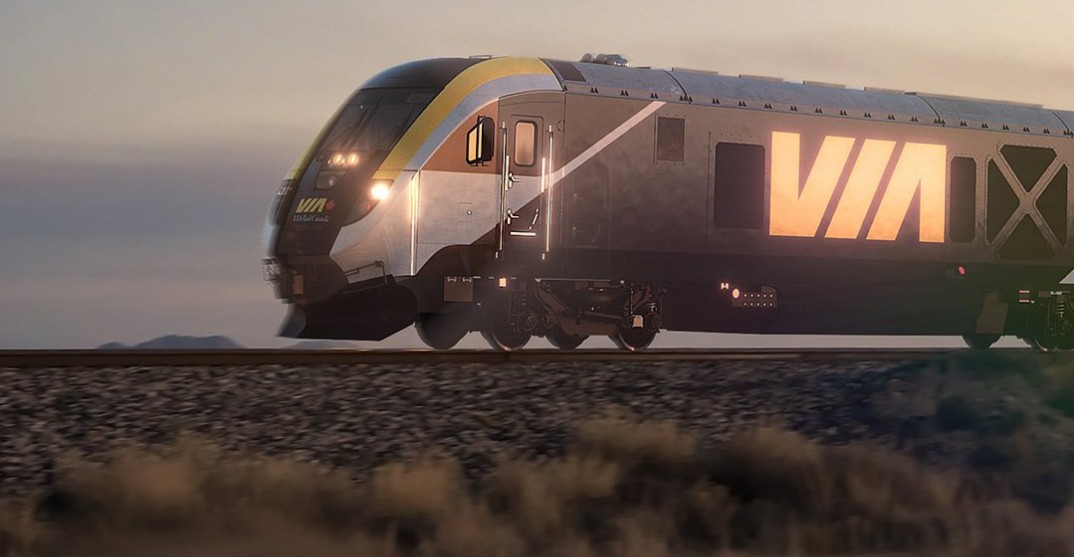High Frequency Rail project announces RFP stage teams
Three teams have been invited to present their proposal for the 1,000 km rail project.

A rendering shows what Canada’s high-frequency trains could look like. – VIA Rail Canada
Key Takeaways:
- The RFP is expected to launch in September.
- The project would connect Toronto, Peterborough, Ottawa, Montréal, Trois-Rivières and Québec City with electrified and dedicated tracks that extend over 1,000 km.
- The procurement process is being overseen by a fairness monitor.
The Whole Story:
The Government of Canada has announced the next stage of its High Frequency Rail project, the country’s largest infrastructure project.
Following the the launch of the Request for Qualifications (RFQ) in February, officials have invited following groups to move to the Request for Proposals (RFP) stage:
- Cadence (CDPQ Infra, SNC-Lavalin, Systra Canada, Keolis Canada)
- Intercity Rail Developers (Intercity Development Partners, EllisDon Capital, Kilmer Transportation, First Rail Holdings, Jacobs, Hatch, CIMA+, First Group, RATP Dev Canada, Renfe Operadora)
- QConnexiON Rail Partners (Fengate, John Laing, Bechtel, WSP Canada, Deutsche Bahn)
The project aims to connect Toronto, Peterborough, Ottawa, Montréal, Trois-Rivières and Québec City with electrified and dedicated tracks that extend over 1,000 km. Travelling speeds could eventually reach 200 km per hour.
Once the RFP launches this September, participants will be asked to present their proposal, including a technically and commercially feasible solution, a business plan and a management plan for the co-development, construction, and operations phases of the project. Officials say that this approach will incentivize respondents to identify and prioritize the benefits to Canadians in their proposals, while also providing them with the flexibility to take innovative approaches to meet or exceed the desired project outcomes.
Budget 2022 provided Transport Canada and Infrastructure Canada with close to $400 million over two years, starting in 2022-23, to continue advancing key project activities and undertake the procurement phase of the project.
The entire procurement process is being overseen by a fairness monitor. This fairness monitor is an independent consultant that acts as an objective, third-party observer, who monitors the procurement process and ensures that it is conducted in a fair manner.
Advancing reconciliation with Indigenous Peoples is a priority for Ottawa, and officials stated that this is why early engagement with Indigenous communities is already underway. As part of the RFQ process, respondents were required to demonstrate their capacity to work with the government to create mutually beneficial, socio-economic development opportunities for Indigenous Peoples. Indigenous reconciliation is critical to the success of the HFR project and will be integrated in all phases of the project.
National security and related risks will also be assessed throughout the project, along with measures to address such risks. Selection of the chosen private developer partner will depend on several conditions, including national security.
High Frequency Rail is expected to change how Canadians travel in southern Ontario and Québec.
“I am thrilled that High Frequency Rail — the largest infrastructure project —is advancing to the next stage of the procurement process,” said Omar Alghabra, minister of transport. “This exciting initiative will require strong collaboration between Transport Canada, VIA HFR, and the selected private developer partner to create a sustainable foundation for the design and development of the project. I look forward to the next phase of this project.”
Currently, passenger rail service represents only 2% of all trips in the region; cars account for 94%.
